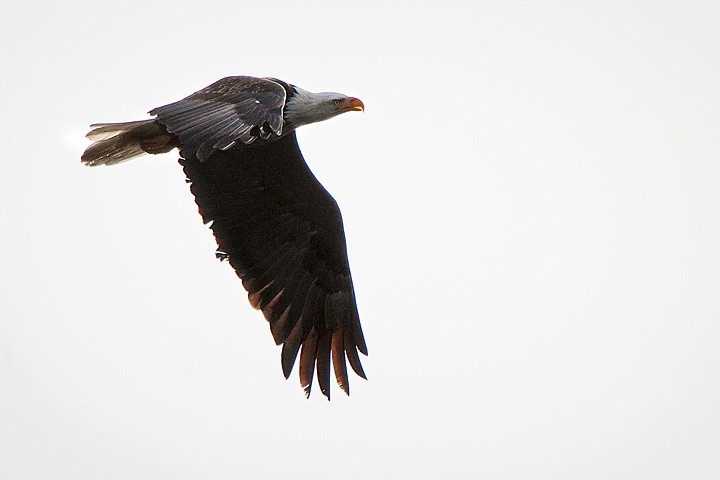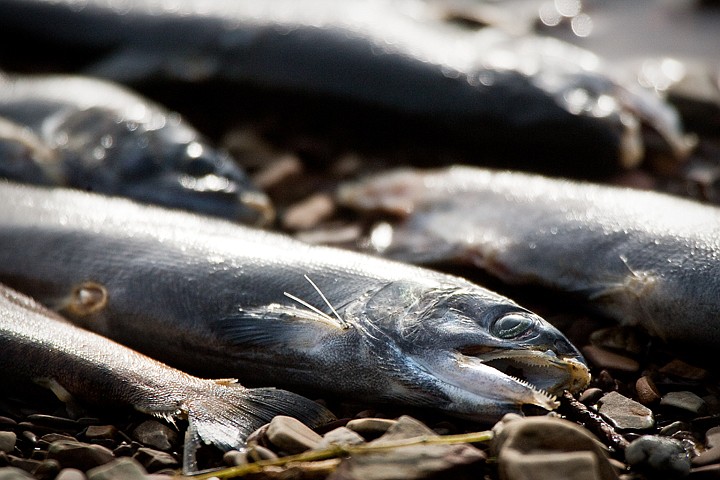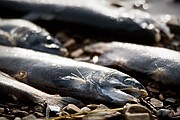America's Ambassadors
It's that time of year again when bald eagles migrate from Canada to feed on the kokanee in Lake Coeur d'Alene.
Locals and visitors flock to the shores to view these magnificent creatures, making this one of the most popular winter activities.
Carrie Hugo, wildlife biologist for the Bureau of Land Management, said this year will be a good year for eagle watching because the fish spawn is supposed to be larger than previous years.
"The best place to watch the eagles is along the Wolf Lodge Bay shoreline," Hugo said. "The kokanee spawn in the gravel close to shore, it makes it very easy for the eagles to see them."
The BLM will host the 20th annual Coeur d'Alene Eagle Watch Week Dec. 26 through Jan. 1. Staff from the BLM, Idaho Fish and Game and Forest Service, along with members of the Audubon Society, will be at two eagle viewing sites from 10 a.m. to 3 p.m. daily during this week.
Spotting scopes, brochures, displays and eagle experts will be at Mineral Ridge Boat Launch and Mineral Ridge Trailhead sites.
The BLM has had about 75,000 people view the eagles in the last 19 years.
"We bring a canopy, telescopes, brochures and best of all we have people out there to answer questions," Hugo said. "Hopefully this will be another big year for eagle viewing. This is an awesome natural event. We are fortunate to have so many of these beautiful birds here in our area, if only for a few weeks."
Hugo said the best time to see the eagles is throughout the day because they roost in the trees once it gets dark.
"They have bouts of activity," she said. "I always tell people to look in the trees if they aren't out flying. It is important to be patient and wait, they will come out again."
Hugo counts the eagle population once a week for eight weeks each year to see how it fluctuates.
As of Dec. 3 she counted 69 birds total, 34 adults and 25 immatures.
"The numbers will continue to grow," she said.
For more information about Eagle Watch, visit www.blm.gov/id or call (208) 769-5000.
Eagle facts
• In 1963 there were only about 400 breeding pairs of eagles. Today, there are an estimated 9,789 breeding pairs.
• Both male and female adult bald eagles have a blackish-brown back and breast, a white head, neck and tail, and yellow feet and bill.
• Juvenile bald eagles are a mixture of brown and white. They reach full maturity in four to five years.
• Wingspan reaches from 72-90 inches.
• All eagles are renowned for their excellent eyesight.
• Bald eagles have about 7,000 feathers.
• Wild bald eagles may live as long as 30 years.
• Bald eagles eat mainly fish, but they will take advantage of carrion and sometimes hunt waterfowl.
• Once paired, bald eagles remain together until one dies.
• When the kokanee numbers decline, most eagles will go farther south to states with large lakes and rivers that don't freeze and have an abundant supply of fish (southern Idaho, Washington, Oregon, Nevada, Utah, California).
- Information courtesy of the Bureau of Land Management.





